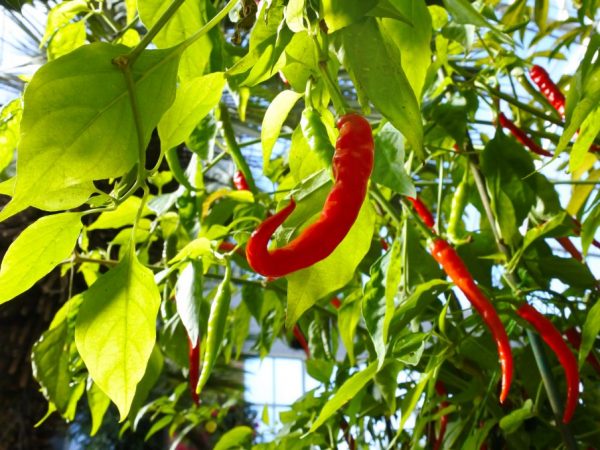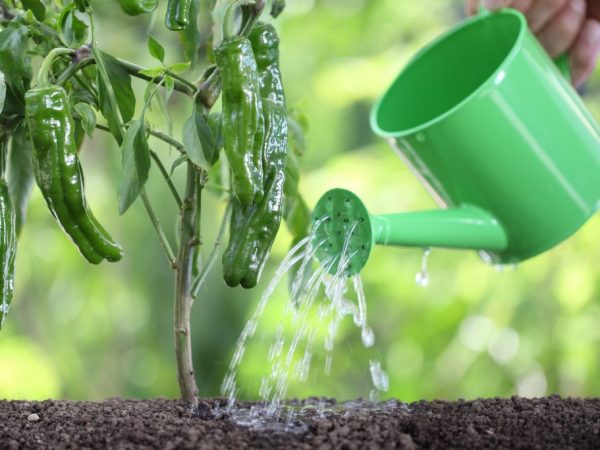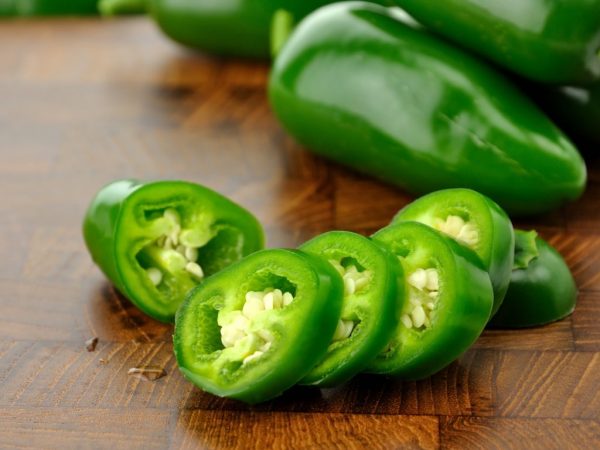Correct feeding of pepper
To get the most out of your plant, you need to know how to grow. Nutrient deficiencies during critical phases such as flowering or fruit setting will negatively impact yields. Let us analyze how pepper feeding is carried out correctly.

Correct feeding of pepper
Top dressing when planting
When cultivating a popular sweet or savory vegetable, remember that the plant is very voracious. This is especially noticeable in the first phase of development, when resistance to external stimuli is formed. If you sow pepper seeds in a nutritious soil, then for 20 days you can not think about additional applications.
How many times to fertilize pepper? When rearing young animals, three procedures are carried out:
- Before the dive. Two weeks later, two adult leaves appear at the seedlings, and the root is sufficiently formed to absorb minerals. For the first fertilizer, a mixture of superphosphate (2.5 g) with ammonium nitrate (5 mg) or potassium humate (2 ml) with urea (half a teaspoon) is suitable. The specified amount of funds is diluted in a liter of liquid and the seedlings are carefully watered.
- 15 days later. Peppers assimilate more essential trace elements without any problems. The above dosages are doubled, applied after irrigation.
- One week before landing in open ground. During this period, it is recommended to use professional drugs. "Gumi" is a good growth stimulant and antidepressant, and the solution is prepared from 1 g of substance per 1 liter of water. The ideal promotes root development and enhances resistance to disease. For watering, use 0.5 ml of the drug per 1 liter of water.
Fertilizers for peppers at the seedling stage should not be applied to dry soil. All procedures are carried out in the morning and strictly under the root. If the solution gets on young leaves, the drops must be washed off.
After transplant
In the open field and in the greenhouse, the seedling needs nutrients. For proper development, you will need both mineral and organic preparations. An excess of micronutrients is as dangerous as a deficiency, so you should not increase the recommended dose.
During the growth period
After the seedlings have been planted in a permanent place of growth, the needs of the culture are closely monitored. If the soil on the site is nutritious, it is enough to apply every 2 weeks. You can feed weakened peppers, sweet or hot, once every 10 days, alternating root and leaf procedures.
After planting, the seedlings grow very quickly, forming roots and greens, therefore they need complex preparations. you can fertilize the culture with nitroammophos. For root irrigation for 1 sq. m plantings use 20 g of funds. When spraying 1 tbsp. l. the granules are diluted in warm liquid.
When feeding peppers, fertilizers containing chlorine (ammonium chloride) are avoided, since, getting into the root system, it clogs the sap flow.
Those who prefer to use organic matter are advised to alternate it with chemistry.Natural remedies increase the growth of tops and there is a chance of getting sick with a fungus, so do not abuse them. Dissolve in a bucket of water:
- wood ash - 1 half-liter can;
- manure - 1 kg;
- chicken droppings - 1 l.
During flowering

Be sure to water the peppers with fertilizer
As soon as the formation of buds became noticeable, a top dressing for pepper is added. With a deficiency of nutrients, the ovaries are poorly formed; only the fruits that have appeared are crumbled. Professionals advise using a teaspoon of potassium sulfate and carbamide per bucket of water.
During flowering, you can feed the plants with manure without fear. For procedures with mullein, the substance is diluted with water in a ratio of 1 to 2. If more complex products are needed, it is better to dilute 1 tbsp in a bucket. l. superphosphate and 12 g of urea.
During fruiting
During the formation of vegetables, additions are not always necessary. Before fertilizing the pepper, a thorough inspection of the plantings is carried out. If there are no defects on the bushes, and the plant itself does not change the color of the foliage, there is no need for feeding. Chemicals have a bad habit of accumulating in the crop as nitrates. The fewer treatments, the safer.
If the fruits of sweet pepper do not ripen well or are lagging behind in development, it is better to go to the procedures. Use superphosphate with the addition of potassium salt - 1.5 tsp each. on a bucket of water. Fans of organic products are watered with mullein and bird droppings. Diluted in 10 liters of liquid 5 liters of natural raw materials.
It is useful to feed fruit-bearing peppers on a leaf. To process with urea, to prepare the solution, take 10 g of powder per bucket of water. Of the complex preparations, it is better to use phosphorus-potassium mixtures. The ratio of substances gives the plant the energy to ripen quickly.
For indoor varieties
Fertilizer for indoor pepper should be given in dosage and at a certain time.
Do not feed with dung or mullein with urea. In the spring, after pecking from seeds, complex preparations for tomatoes are used. The introduction of superphosphate and urea should be done carefully: for 1 liter of liquid, 3 g of the product is enough.
When grown on a windowsill, watering with calcium nitrate is allowed (no more than 10 g per 5 liters of liquid). Irrigation can be carried out with the addition of ammonia: the substance drives away midges from the roots, but with frequent use it accumulates in the soil, which leads to the death of the bush.
Indoor varieties have been growing on the windowsill for more than a year, so you need to change the soil more often. As a safe top dressing for peppers, water the ground with potassium permanganate or nettle infusion. Soda treatment is sometimes allowed, but the substance strongly alkalizes the soil.
Original types of fertilizers
Tea, bread, shells, whey are used as fertilizers. Of course, the substances do not give such a quick result, but they do not accumulate in the fruits. These funds are allowed to water several times a week.

Good fruits
Tea
It contains a huge amount of trace elements that have a positive effect on the growth of seedlings. Foliar and root dressing for peppers activates the protective properties of plants. Of course, diseases cannot be cured, but keeping the bushes in good condition is easy.
The solution is prepared from the foliage and flowers of medicinal herbs (plantain, dandelion, coltsfoot), crushed, put in a bucket and poured with cold water. The plants are infused for a week, after which they are filtered through the fabric. On average, the output is at least 5 liters of liquid. Under each pepper, a liter jar of funds is poured.
Infusion of nettle, hops and horsetail not only feed the bushes, but also protect against fungi. Half a kilogram of greens is poured into 6 liters of boiling water, left for 12 hours, and then filtered through cheesecloth. The cooled agent is irrigated at the root and sprayed during flowering.
Bread
The popular product contains yeast that has a positive effect on plants.With regular ingestion, the substance stimulates seed growth and enriches the culture with micronutrients. When irrigated, the bushes develop faster, all varieties improve the taste of the fruit.
Fertilization with bread is applied in the spring, after planting seedlings. The procedure is carried out in a warm ground, since yeast is not activated in cold soil. To prepare the product, cover a quarter of the bucket with black and white breadcrumbs, fill it with water and leave it under a battery or in the sun. After 2 weeks, the expressed solution is diluted with a clean liquid 1 to 1, after which the plant is watered at the root.
Shell
To increase soil fertility, it is not necessary to use chemicals. Farmers often use a proven remedy that complements the treatment with azophos or ammonia. The eggshell contains:
- calcium carbonate;
- phosphates;
- magnesium;
- organic matter.
Trace elements are important for the development and nutrition of crops. In addition, they lower the acidity of the soil and improve its structure. Before use, the raw materials are thoroughly washed under running water to remove product residues, after which they are dried and disinfected in the oven.
To prepare a nutrient solution, take the shells of five eggs, grind and pour in a liter of boiling water. Within 5 days, insist, stirring every day with a wooden stick. After the expiration date, the product is diluted with clean liquid in a 1: 1 ratio, after which it is poured over a glass under a bush.
Serum
You can feed pepper (sweet, hot) with nettle infusion or ammonia. However, rarely does anyone decide to use dairy products as fertilizers. The product contains a lot of active substances and bacteria that improve the condition of the soil and prevent late blight. Irrigated vegetables increase the yield and taste of the fruit.
Serum is allowed to treat both seedlings that appeared 2 weeks later from seeds, and plants after transplantation. A liter of the product is poured into a bucket of water, 10 drops of iodine are added and thoroughly mixed with a wooden stick. Under one bush, it is enough to add 1 liter of the resulting solution. Foliar top dressing can also be carried out on the leaf.
Recommendations
If the plant looks bad or develops poorly, it may be an excess or deficiency of any important substances. Most often, such a bush loses the color intensity of the foliage or the plates fall off. A dull gray coating on the underside of the greenery indicates a lack of nitrogen. To quickly bring the plant to its senses, it is enough to spray it with a urea solution (1 tsp per bucket of water).
If, after flowering, the ovaries actively fall off, treatment with boric acid will help save the crop. To do this, 5 g of powder is diluted in 10 liters of warm liquid. The product is poured into a spray bottle, after which it is sprayed on the sheet.
During fruit setting, peppers love phosphorus-based fertilizers. Excess nitrogen negatively affects the formation of products, therefore, it is necessary to abandon it. The best option would be processing with a superphosphate solution (1 tsp granules per bucket).
Summarizing
To get a bountiful harvest of vegetables, you need to know about the intricacies of fertilization. Mineral and organic are used both before sowing and after transplanting to the main place of growth. The above recommendations contain information on how to properly feed pepper at different stages of development.


